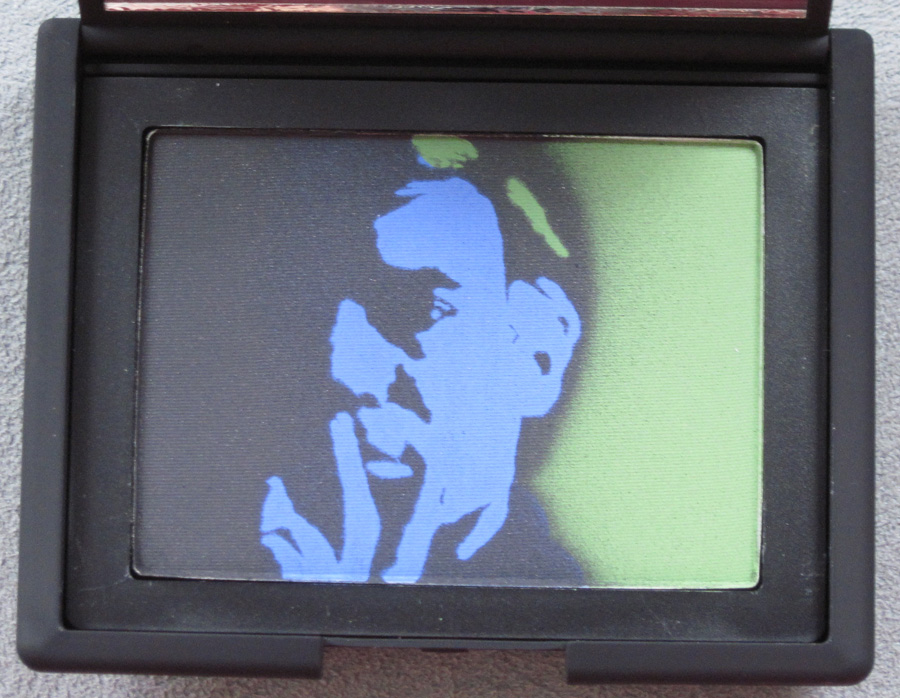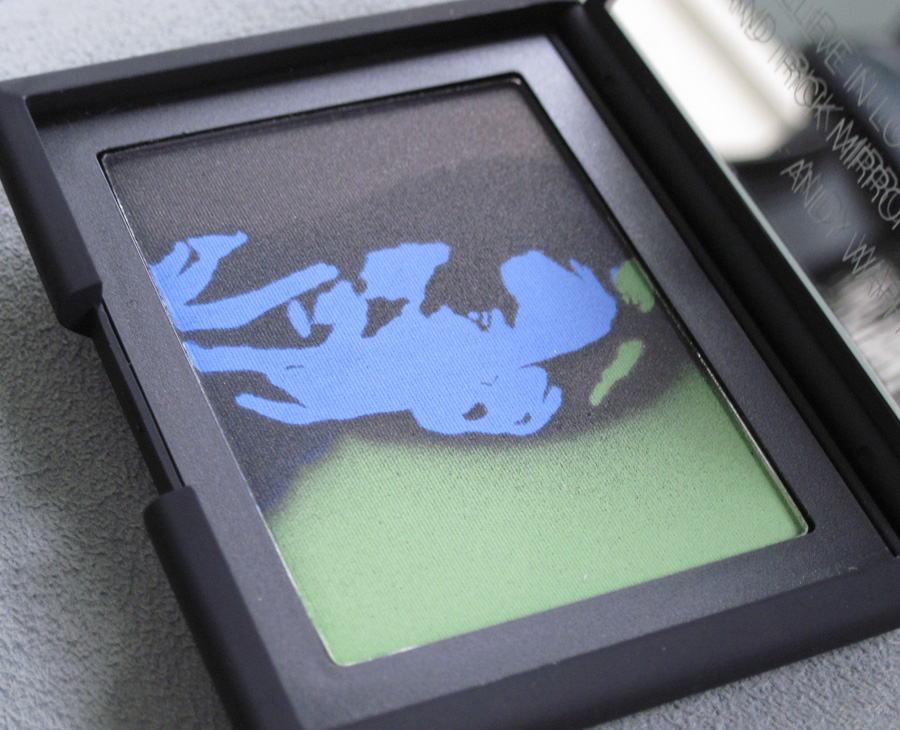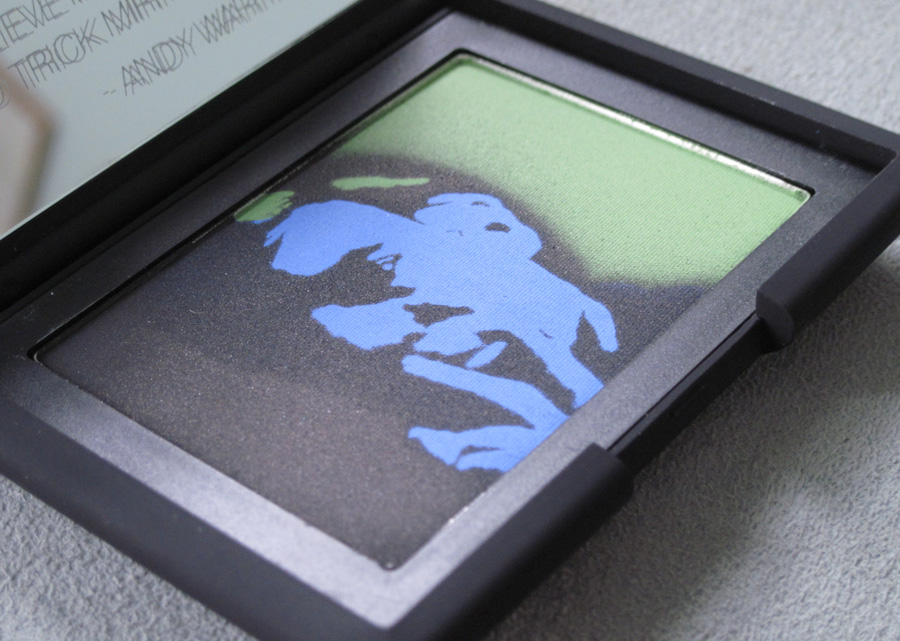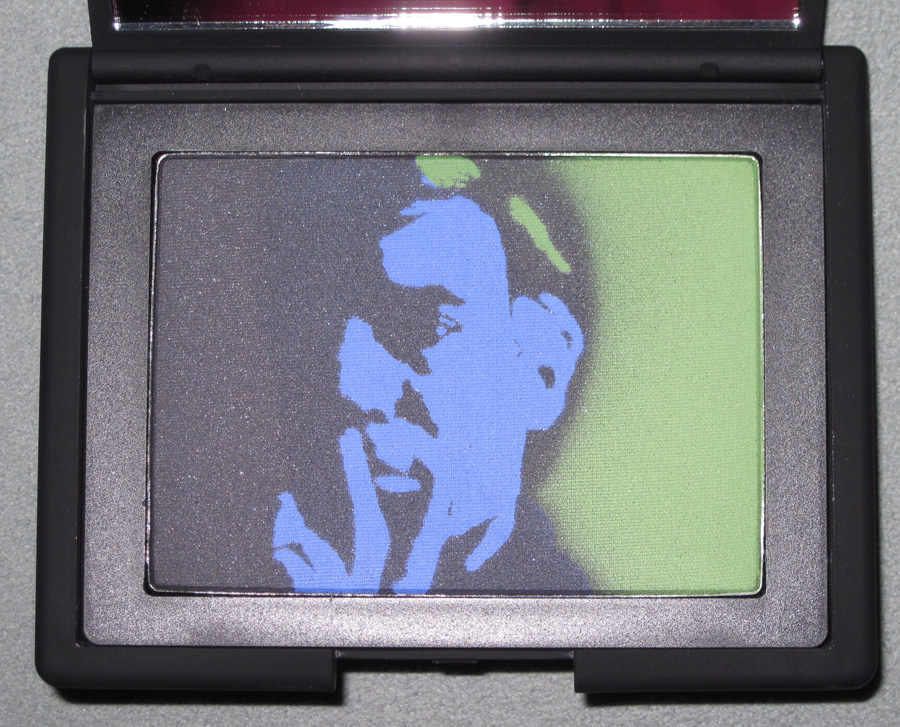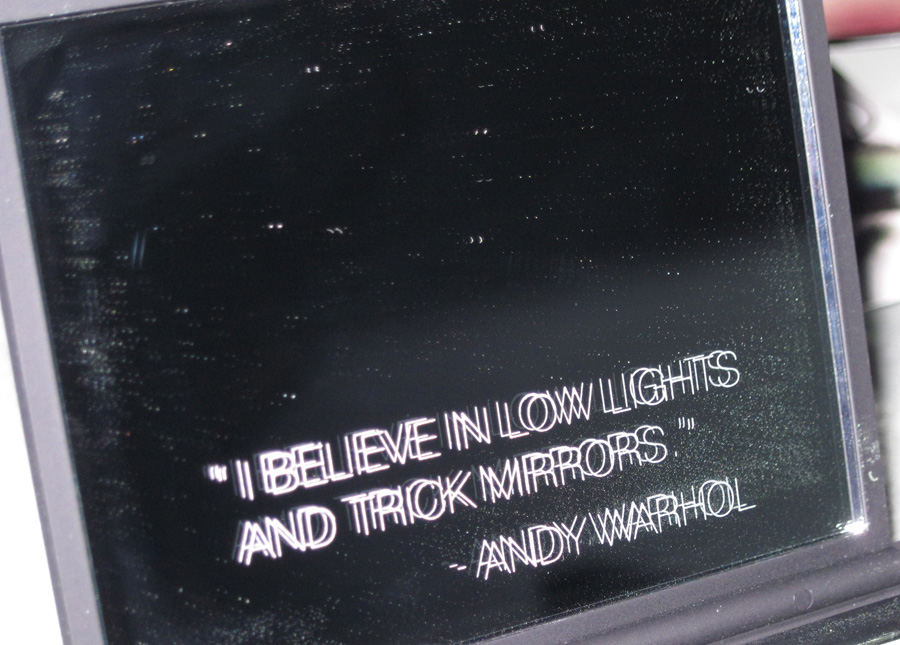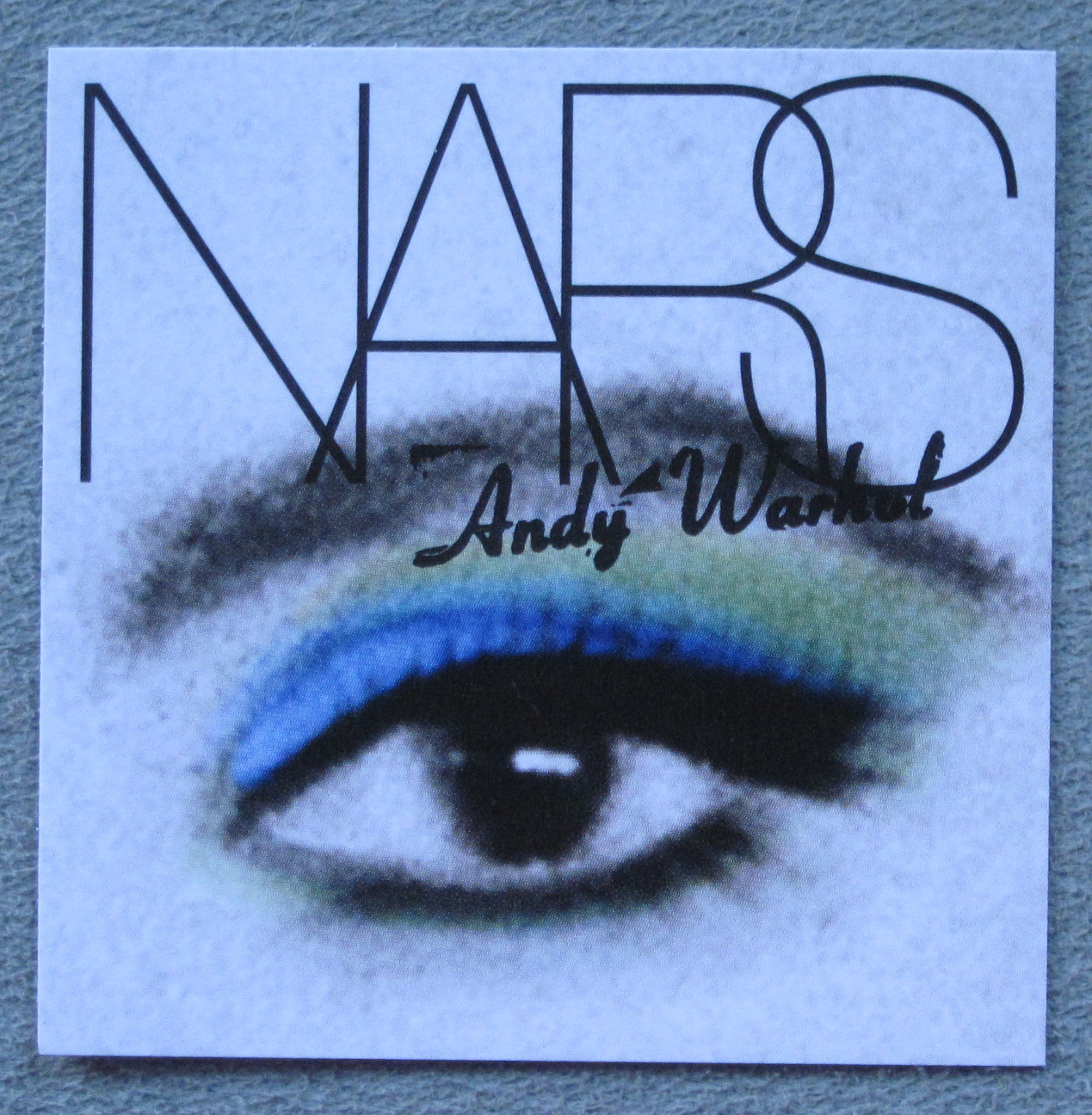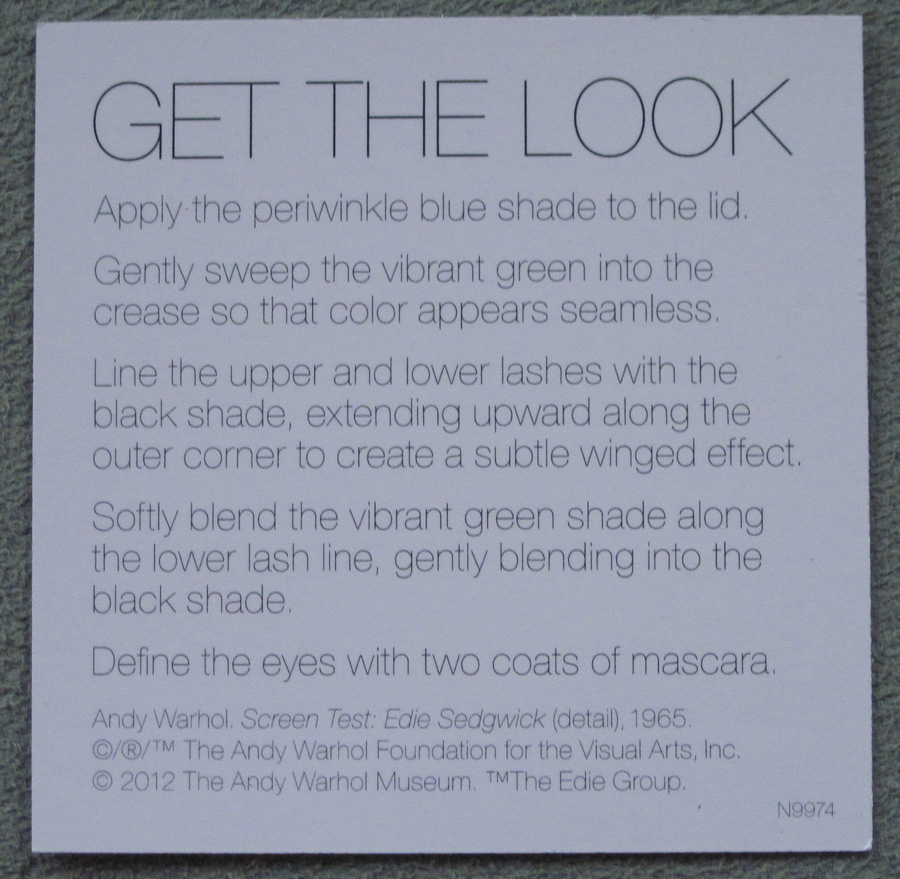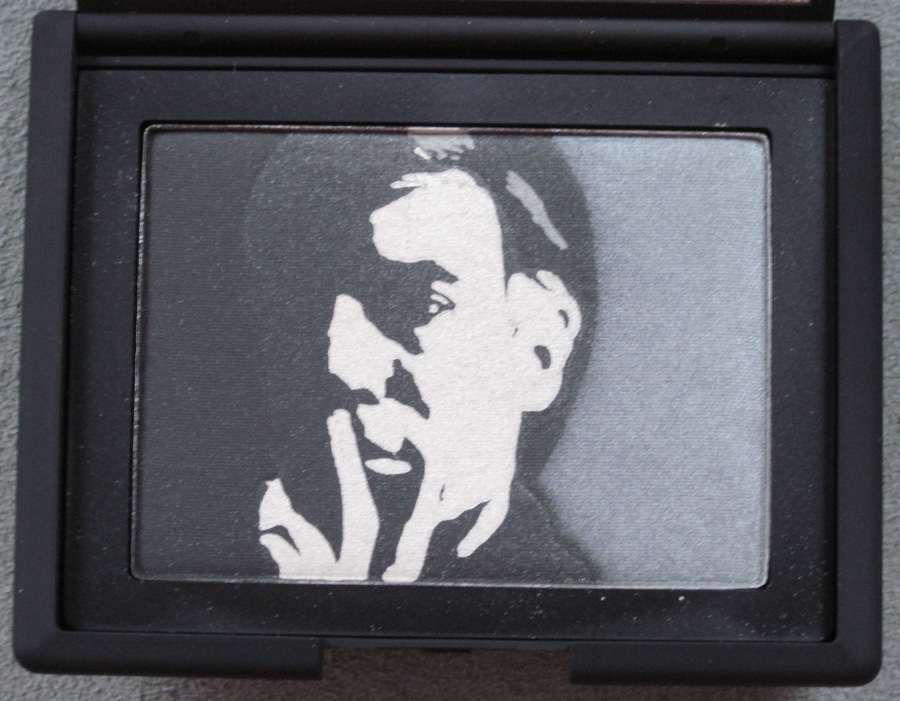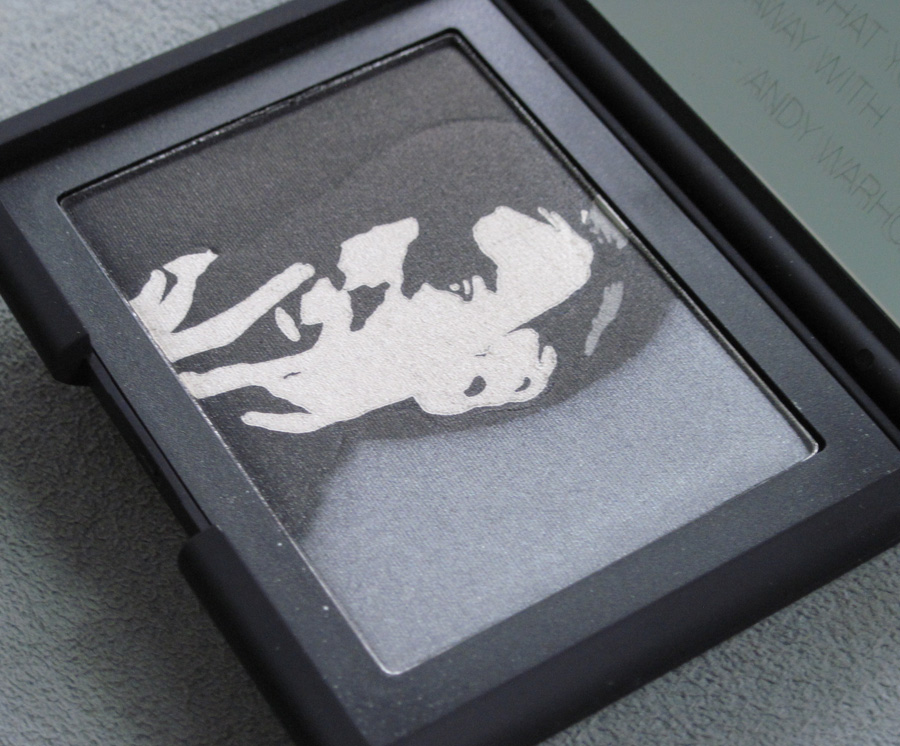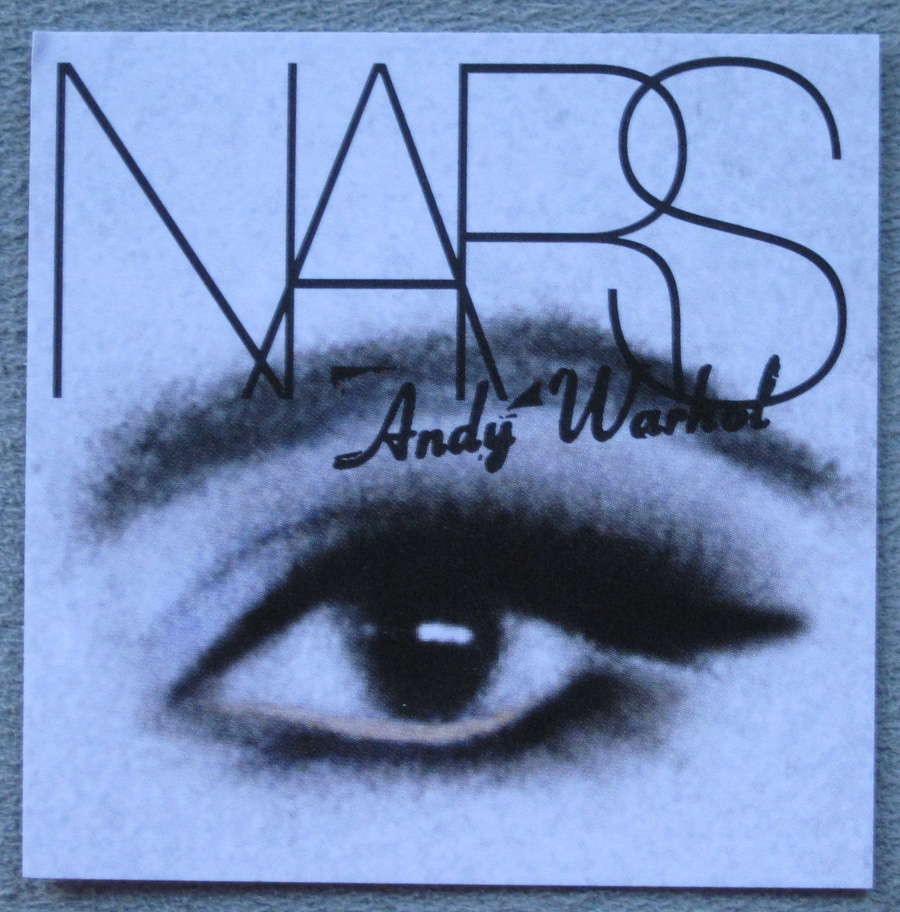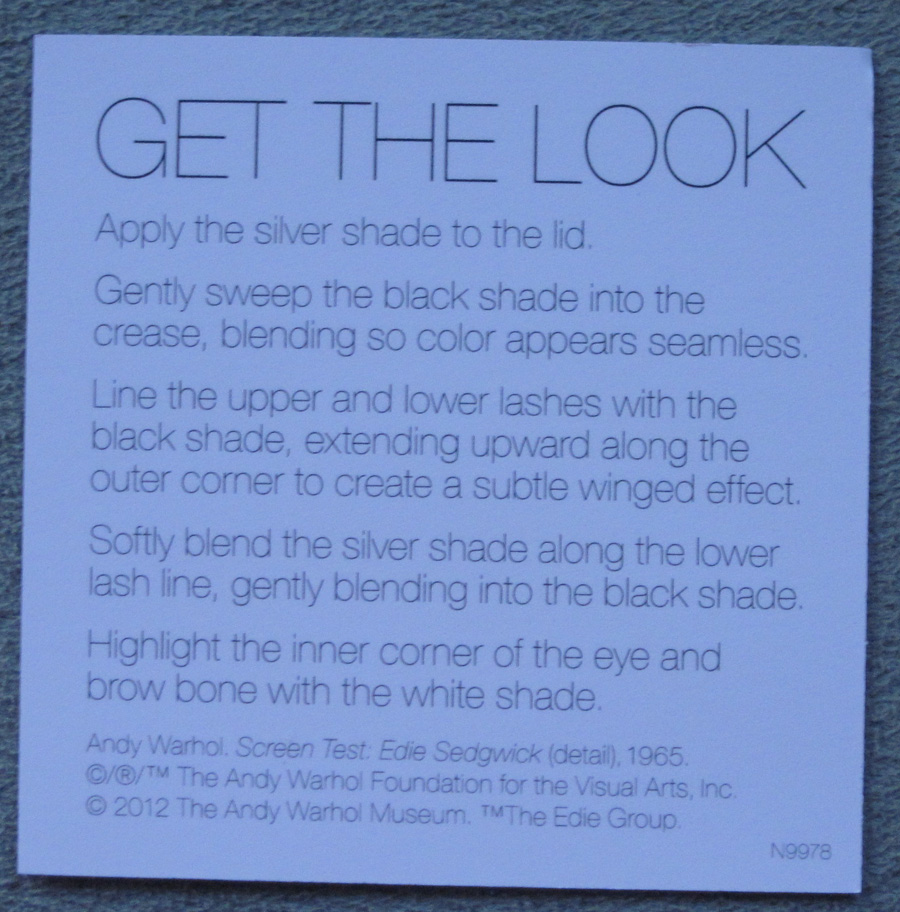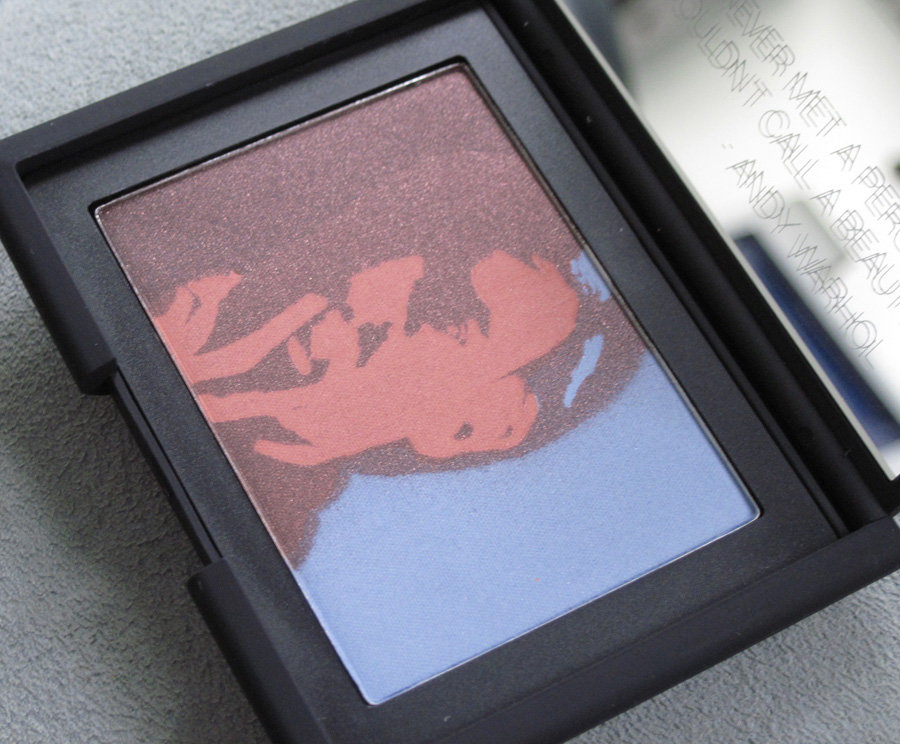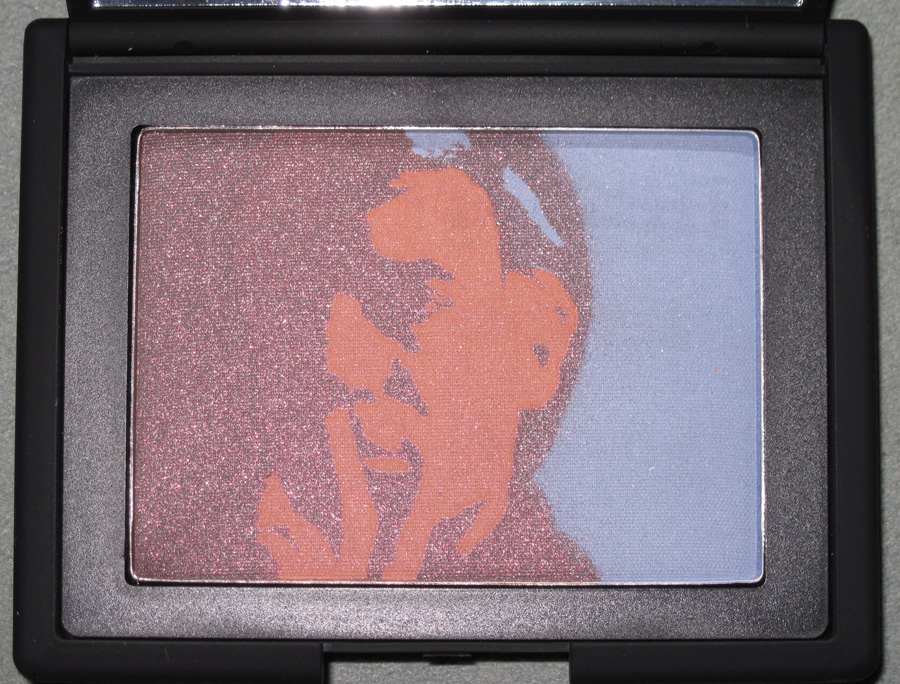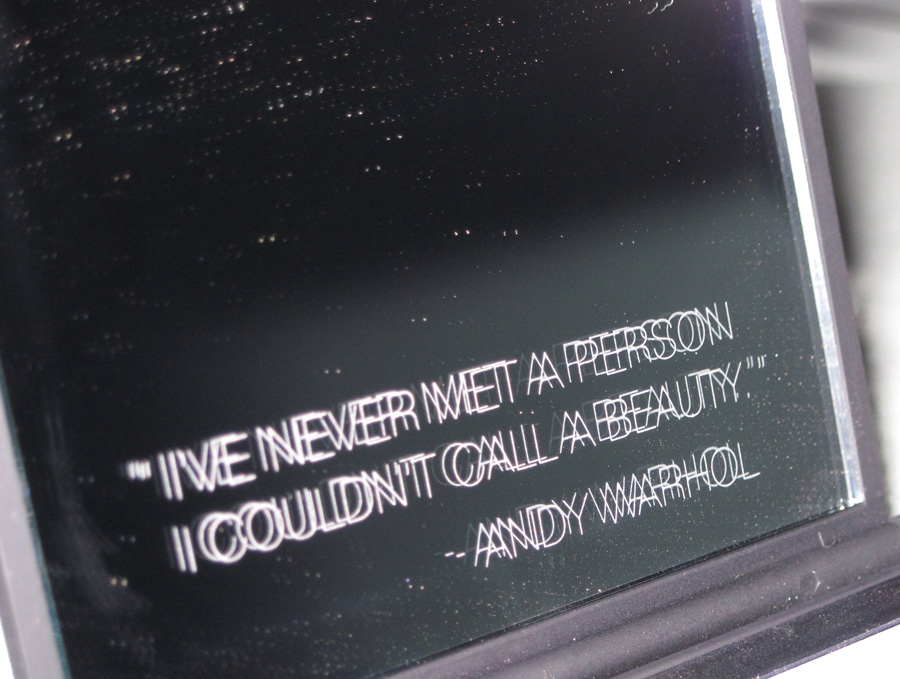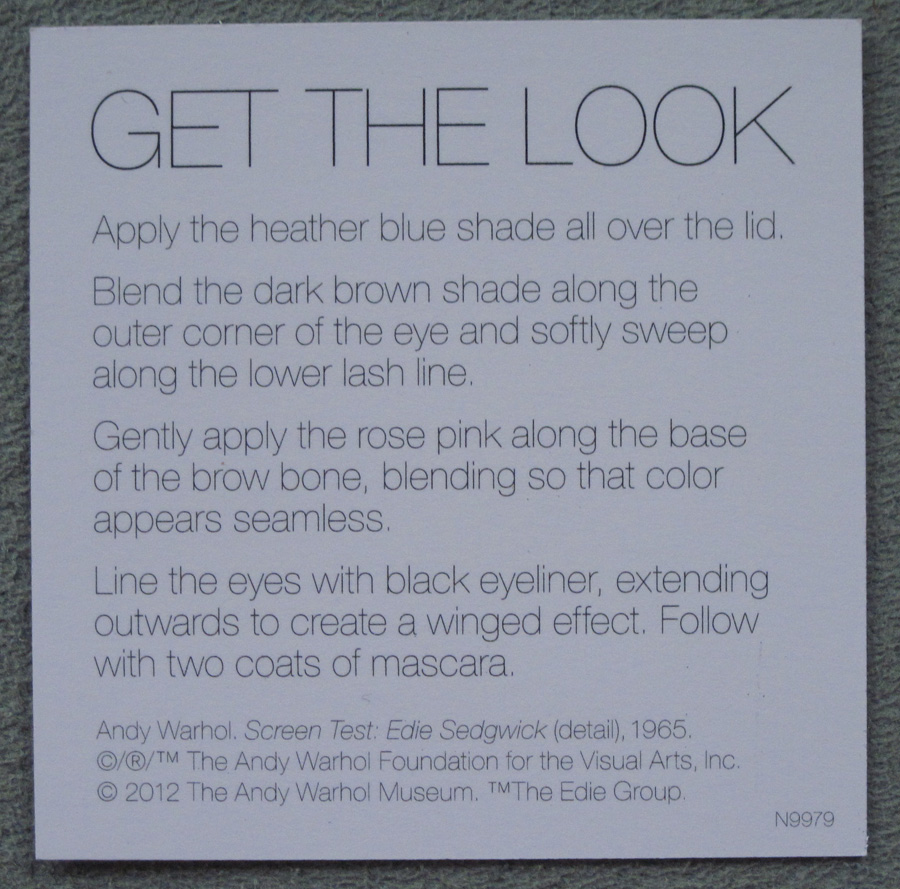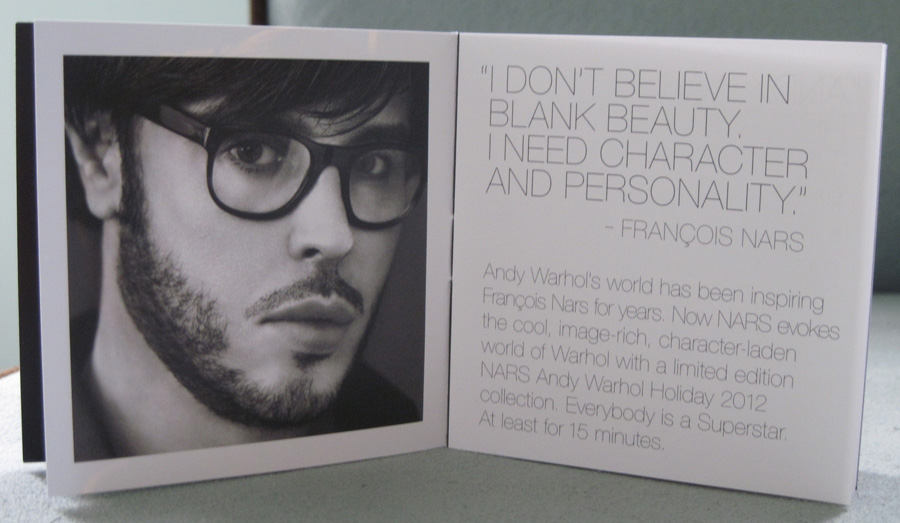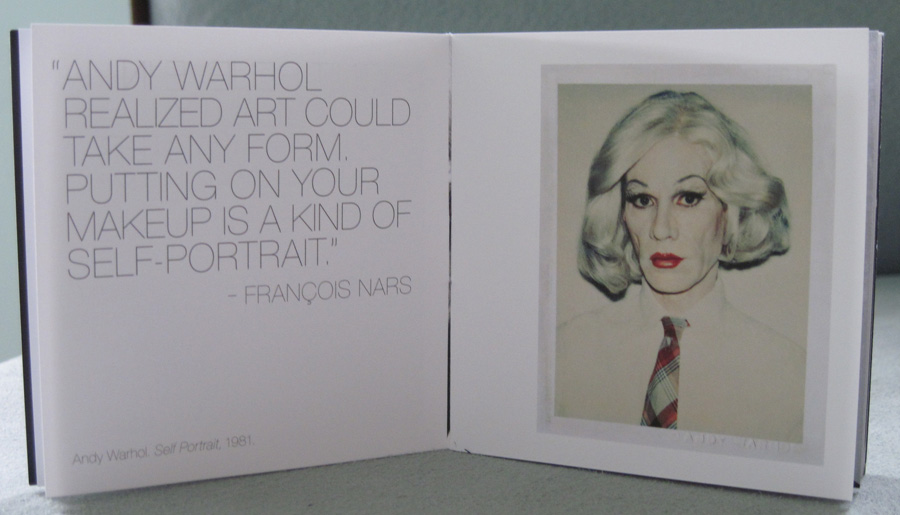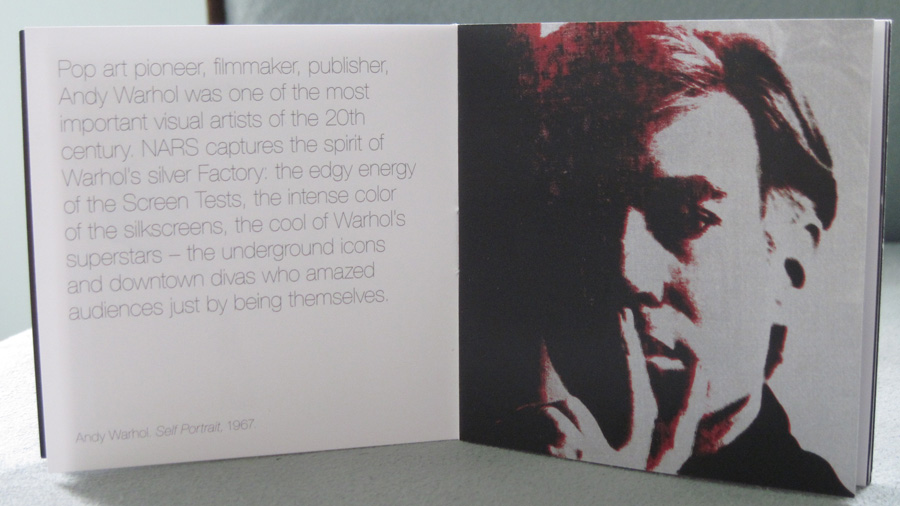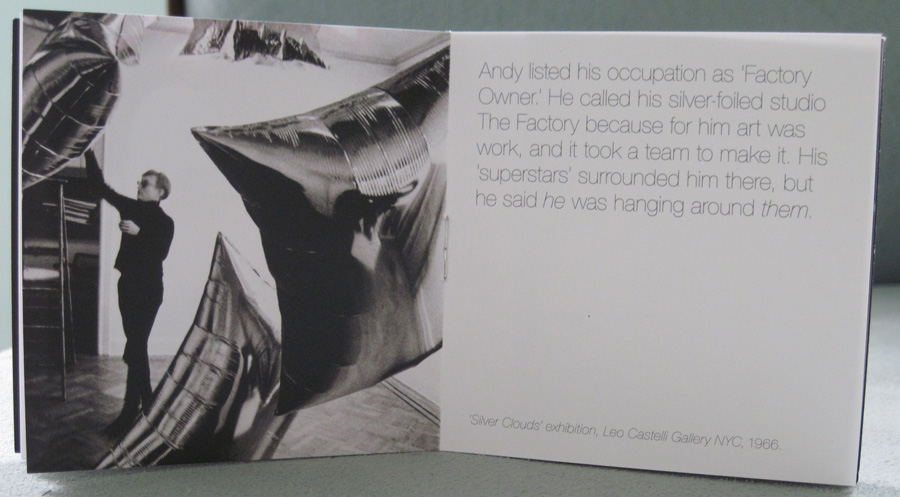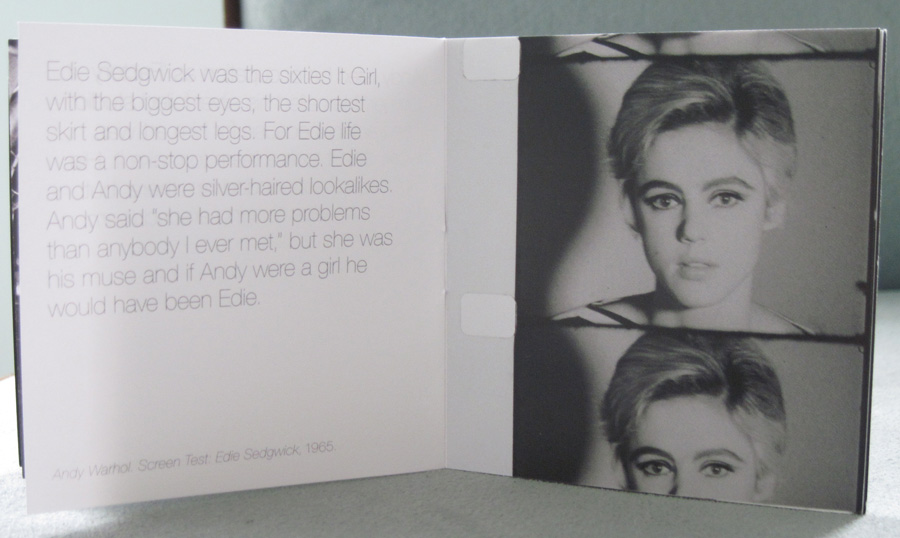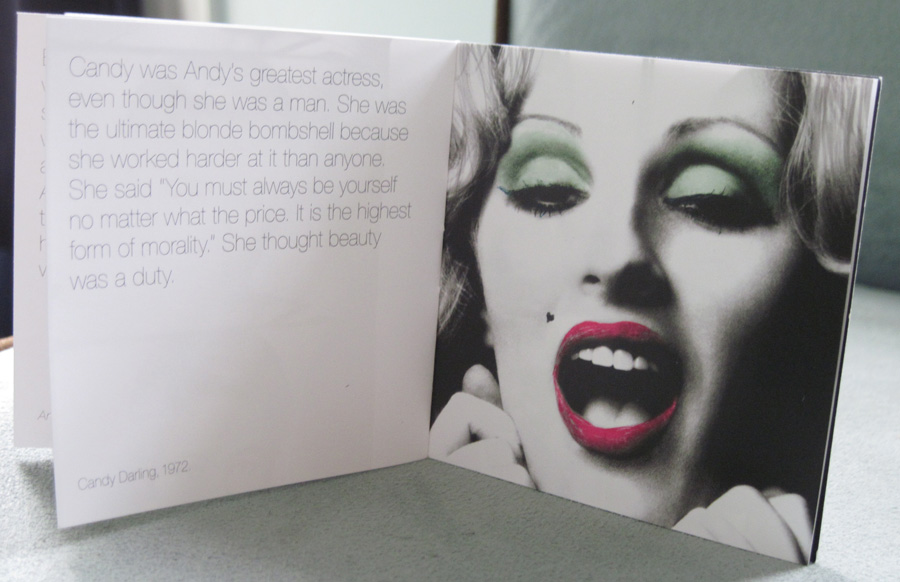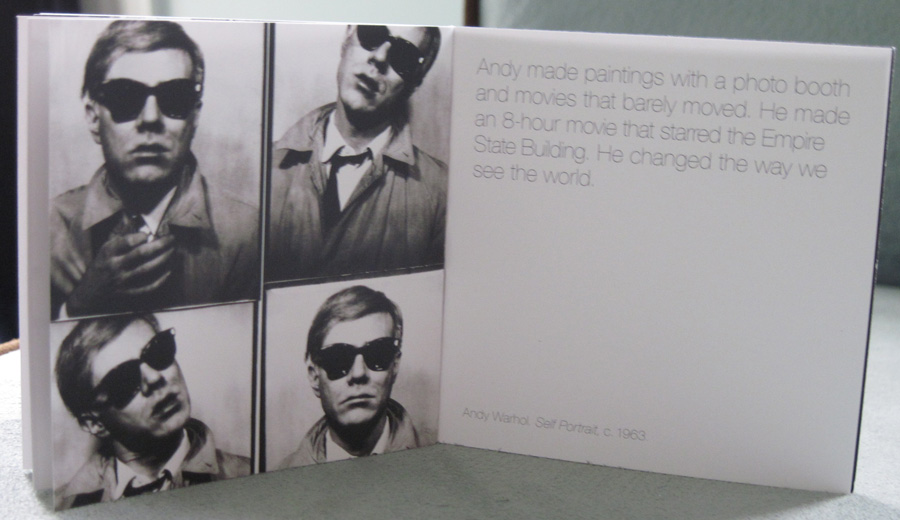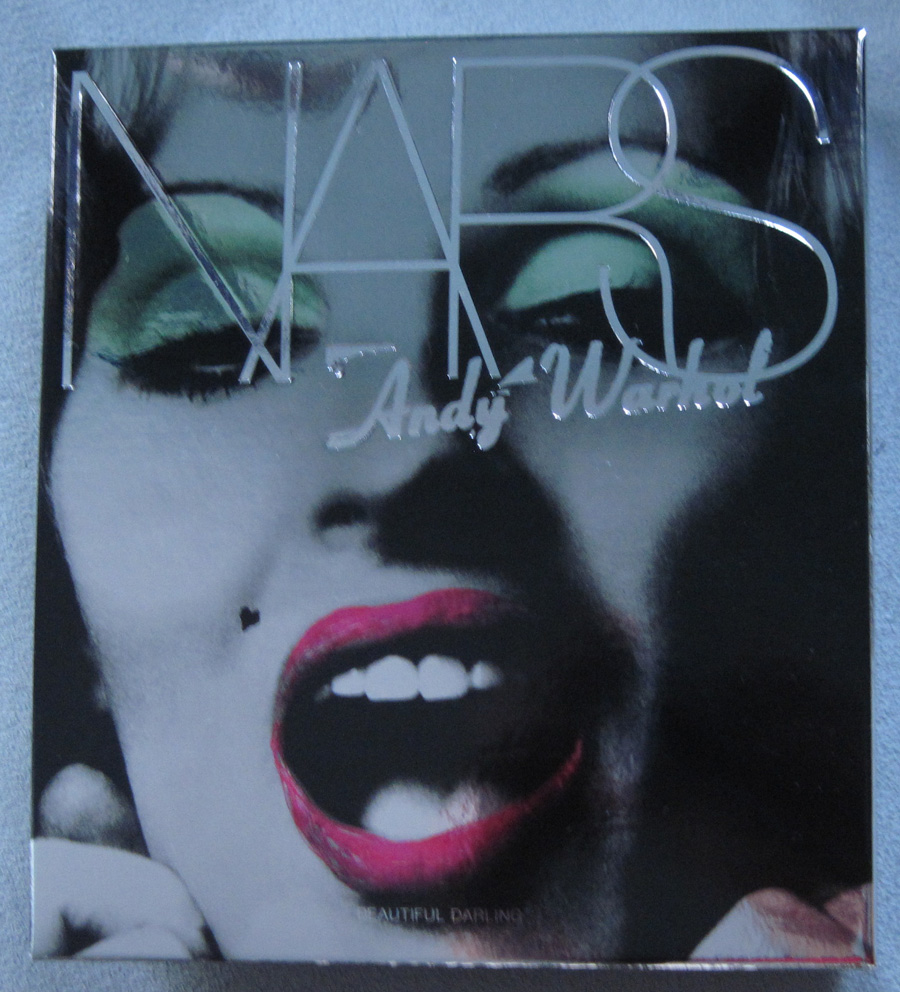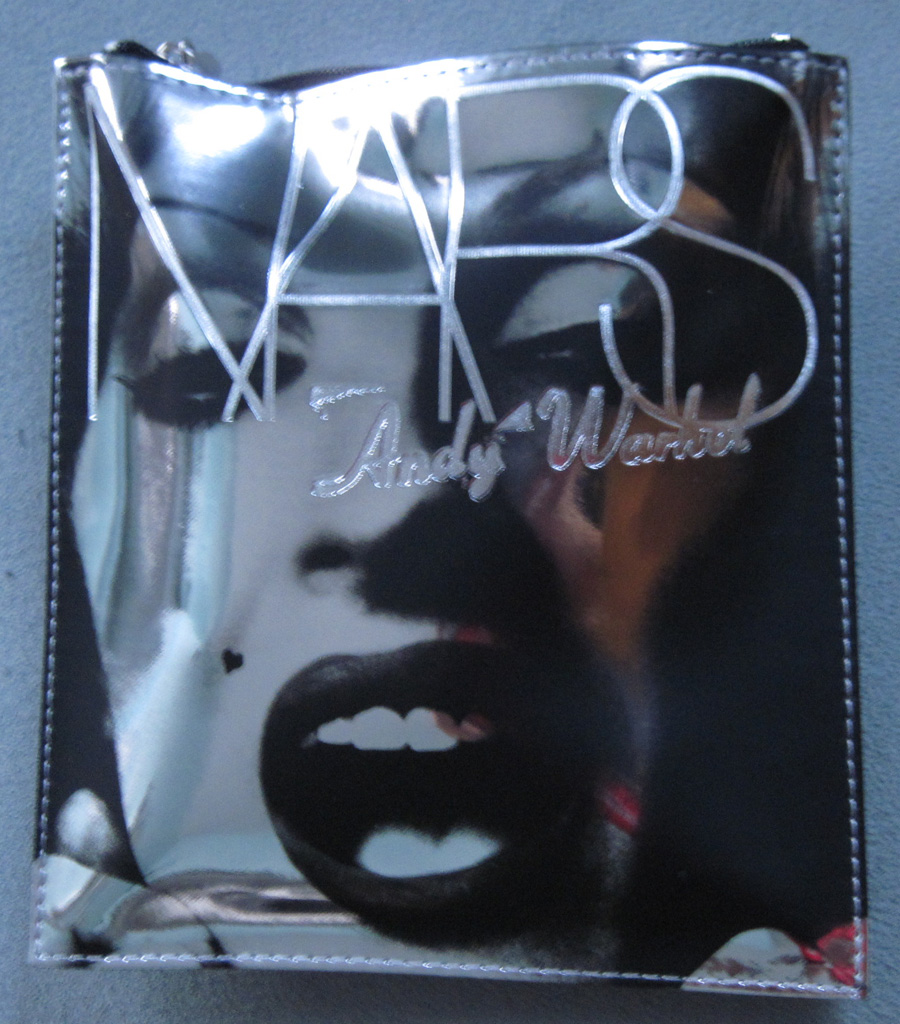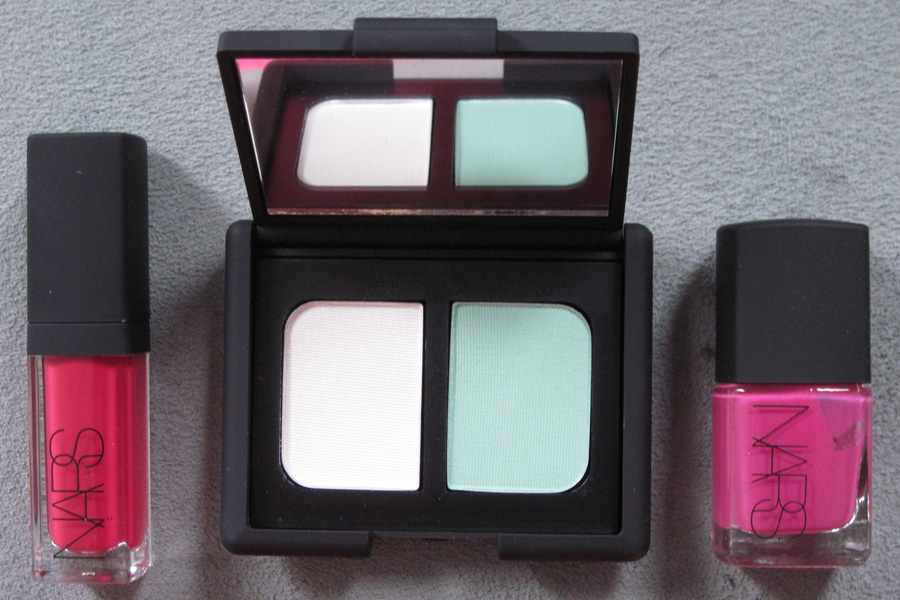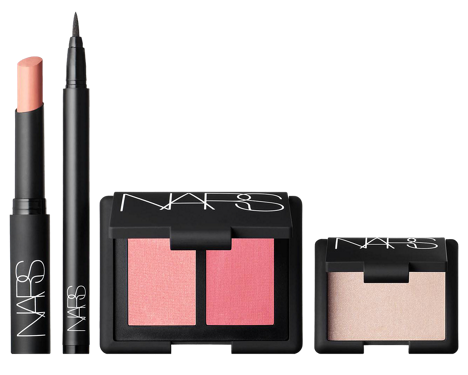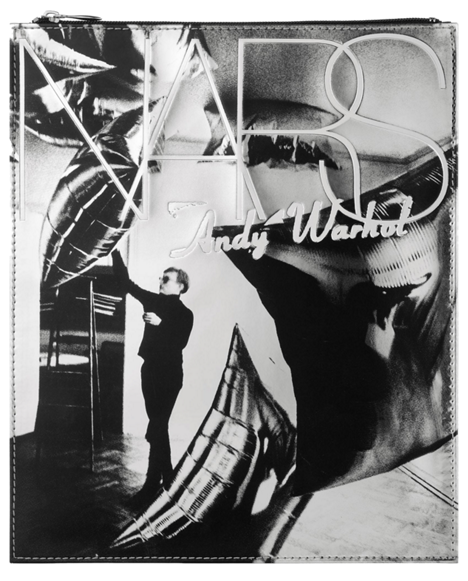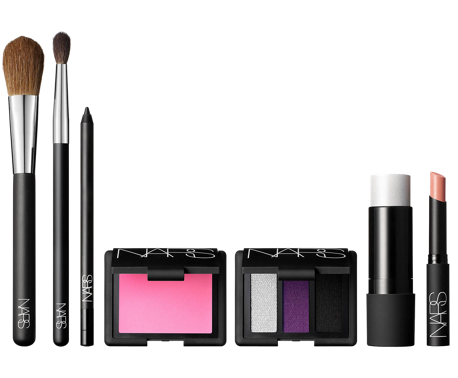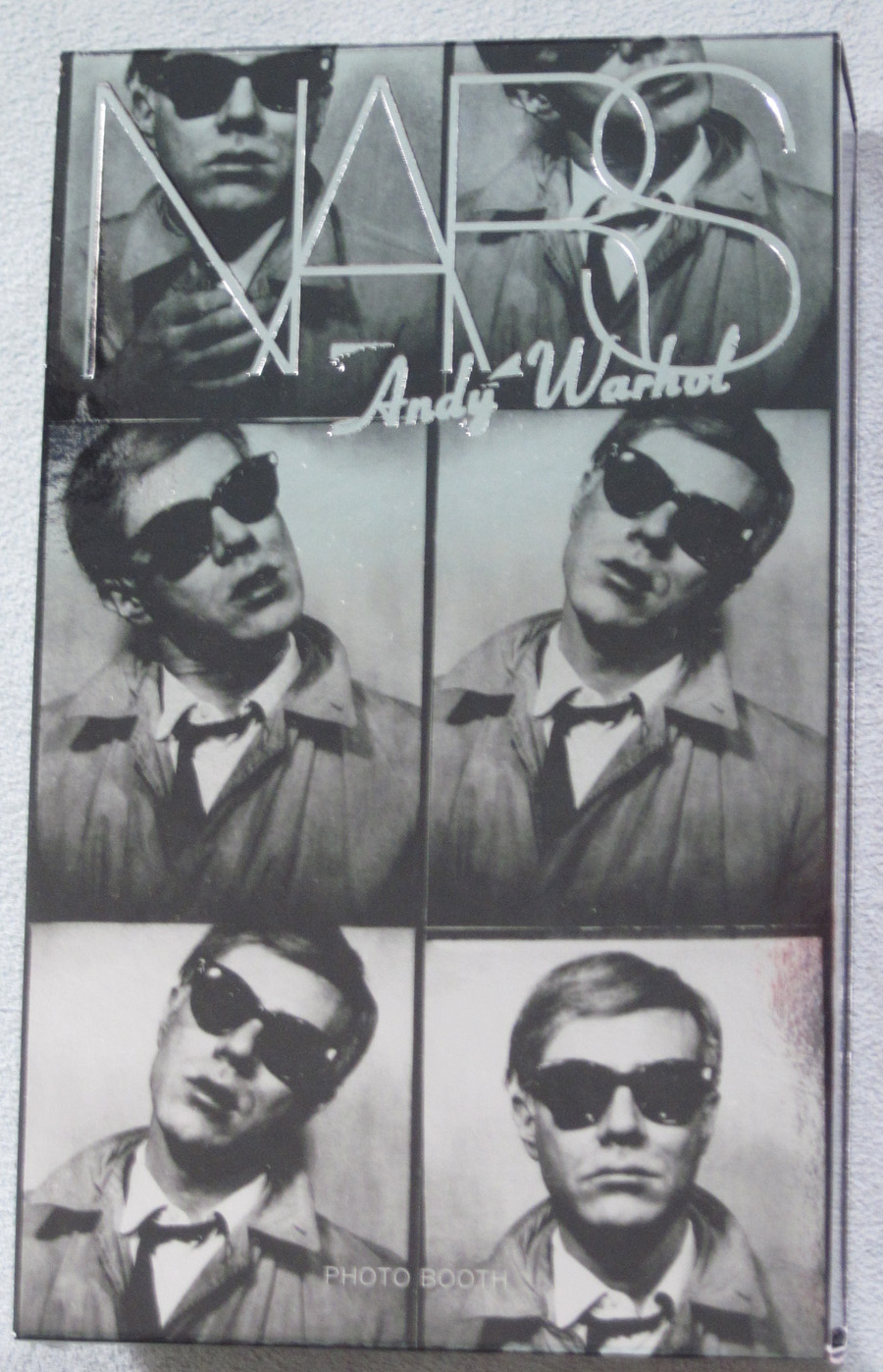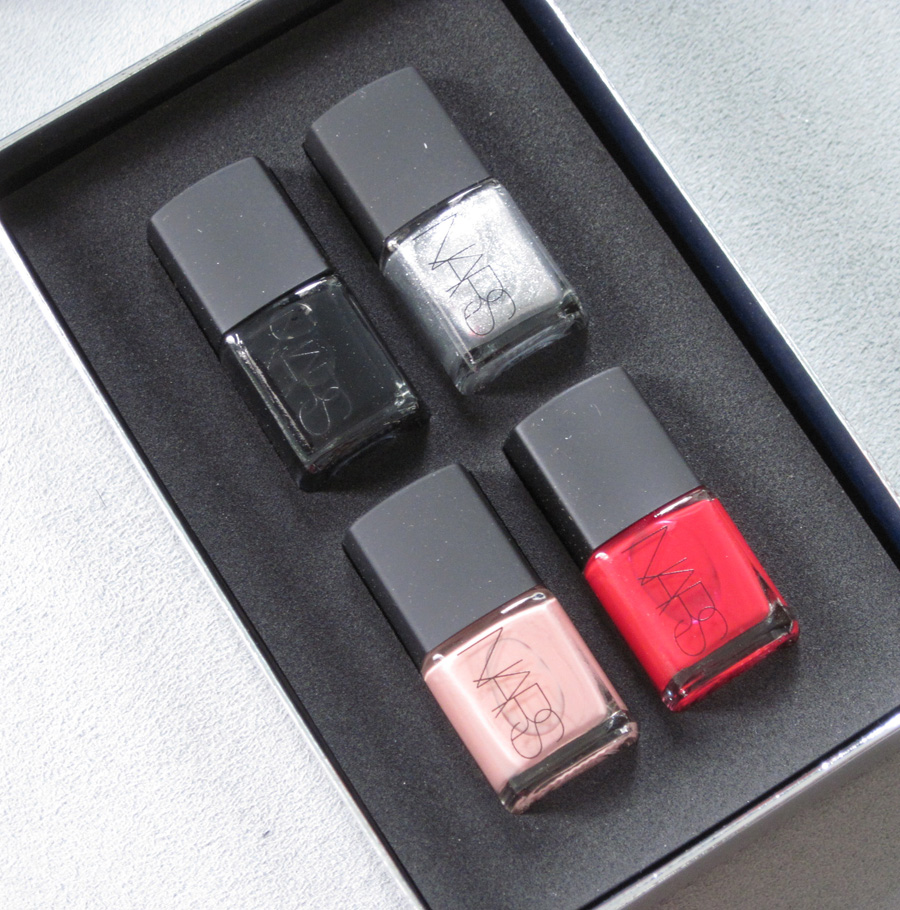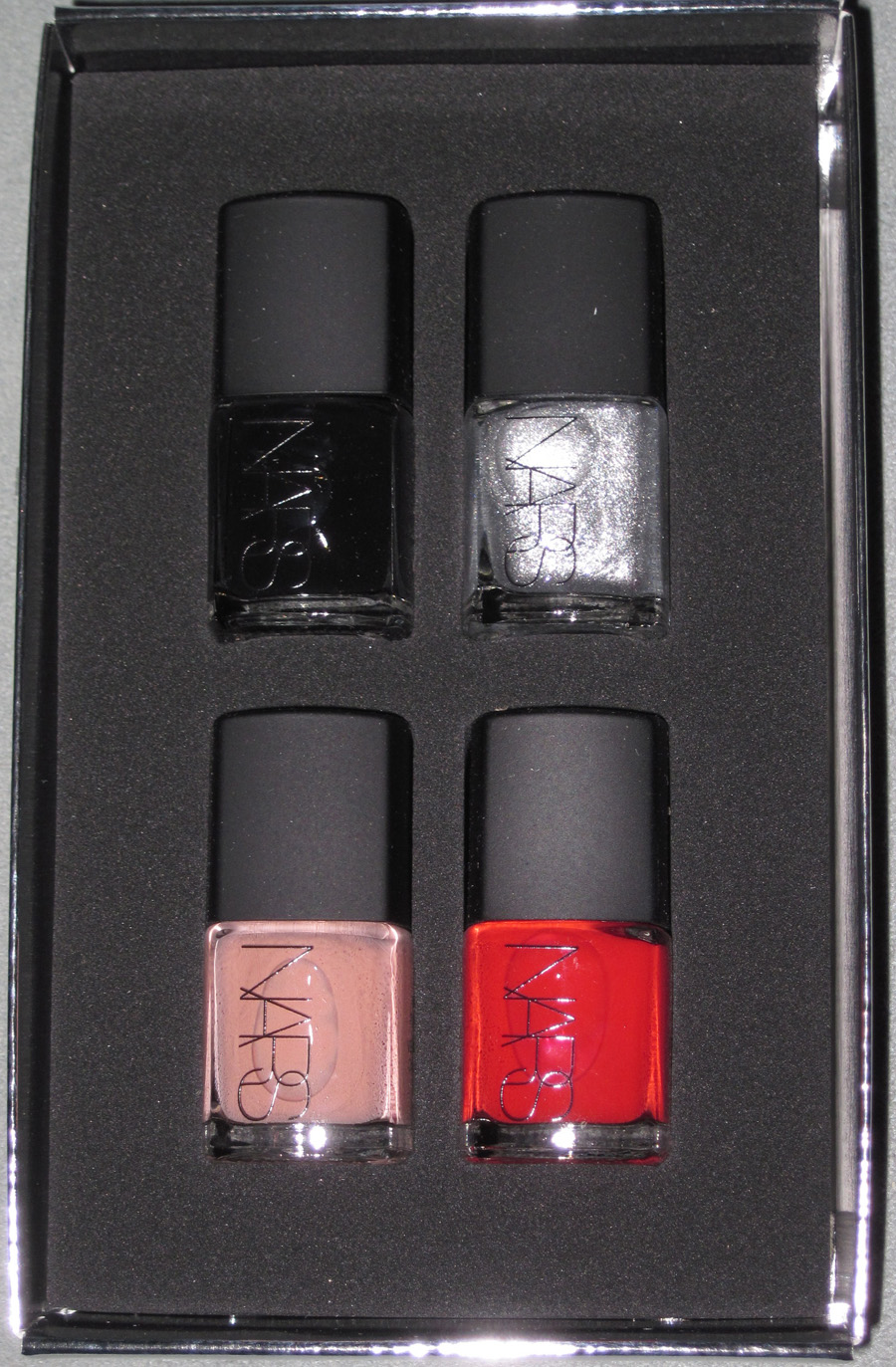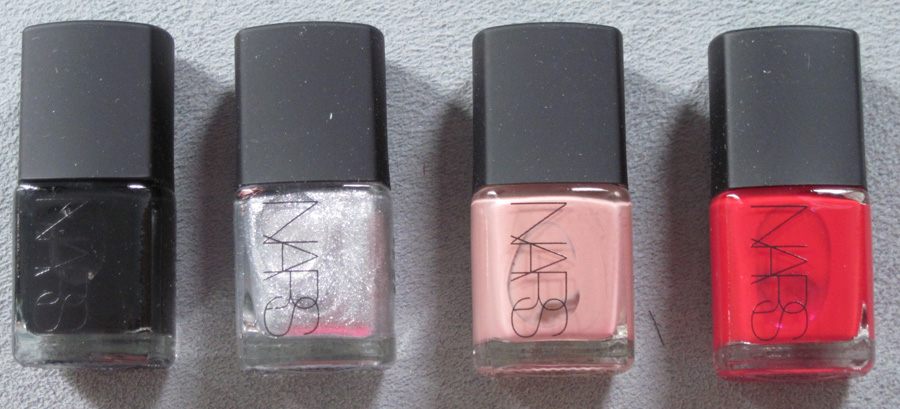The Andy Warhol for NARS collection is positively enormous! Here is part 2, the Silver Factory Holiday collection. (Click here for part 1 and to read about the background on the collaboration.)
The ad copy: "In a new makeup gifting collection for department and specialty stores, NARS
captures the spirit of Warhol’s Silver Factory. The edgy energy of the Screen
Tests, the intense color of the silkscreens, and the cool of Warhol’s superstars –underground icons and downtown divas who amazed audiences just by beingthemselves. For Andy the factory characters were like a full spectrum palette –
personality as color."
Let's start with the eyeshadow palettes, which feature variations on Warhol's Self-Portrait of 1967. Like the Flower palettes, each has with a unique quote inscribed on the mirror and a "Get the Look" card.
Self-Portrait Palette #1:
With flash:
Get the Look card, which shows a close-up of Edie Sedgwick (the Flower palettes used Debbie Harry):
Self-Portrait Palette #2:
With flash:
Get the Look card:
Self-Portrait #3:
With flash:
Get the Look:
Each palette also came with a booklet, with different content than the ones for the Flowers palettes. (The one shown below is slightly bigger than the ones included with the Self-Portrait palettes – this bigger version is included with the Beautiful Darling and Photobooth gift sets.)
Getting back to the self-portraits, here is one of the original 1967 silkscreens. Like Warhol's earlier Flowers, the image is based on a photo (this time, taken by Rudolph Burkhardt) and was hung in blocks of 4 or more.
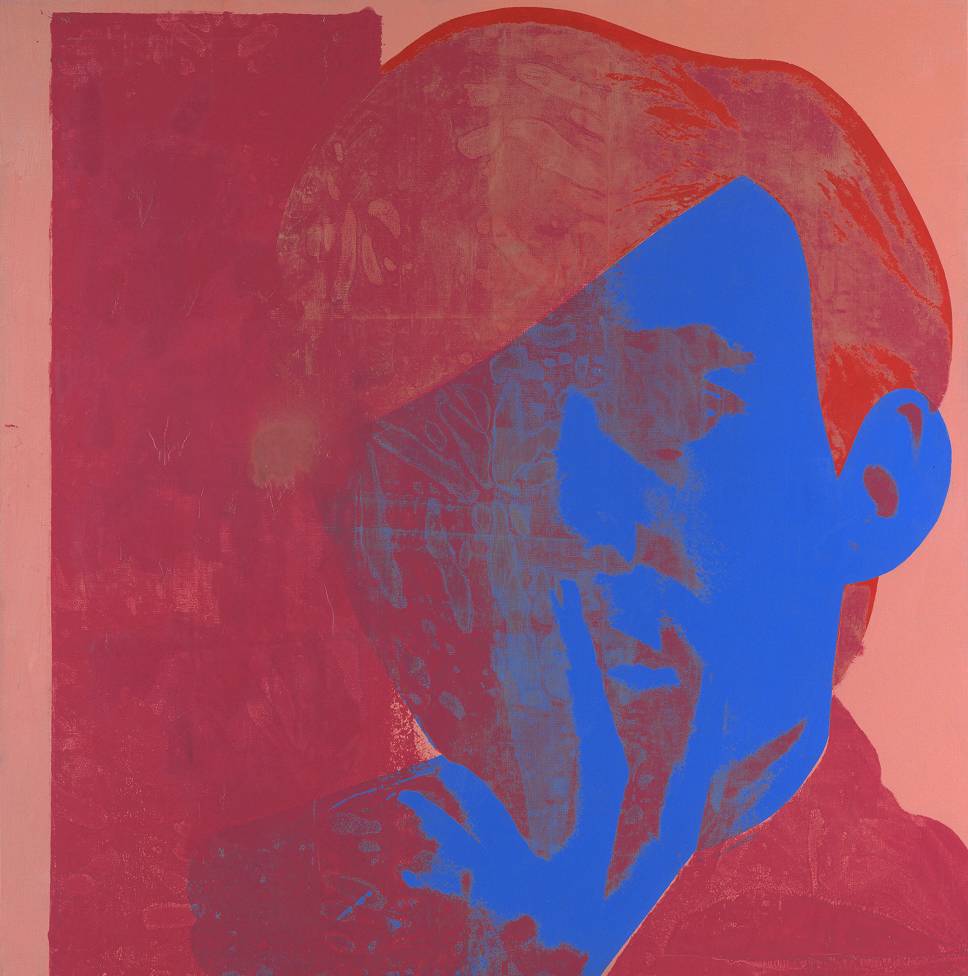
(image from tate.org.uk)
Much has been written about Warhol's self-portraits, and while I can't cover everything, I can tell you how two themes are identical to those found in Flowers. 1. As with Flowers, Warhol's Self-Portrait upends an art historical tradition – in this case, that of the brooding, intellectual self-portrait of the artist, while in Flowers it was the still-life – through the use of psychedelic colors and a rather theatrical pose that was not meant to convey the "real" Warhol. "Warhol has taken this mainstay of the history
of art and has resurrected it with the colors and the patterns and even
the media of the modern world. By taking a photograph of himself as his
subject matter, he has not only carried on the tradition, but has also
attacked it, assaulting it with the sheer force of innovation. The
screenprint process itself adds a twist, as Warhol has deliberately
excluded himself as much as possible from the creation of his likeness.
To what extent, then, is this a self-portrait? Warhol is
perversely celebrating his connection to the piece while advertising his
own detachment from it. Meanwhile, the mad colors, which completely
avoid any attempt at realism, and the simple, almost cut-out fields in
which they have been applied, work visually on an aesthetic and
expressionistic level yet show his irreverence towards the painstaking
oils of hallowed forebears such as Rembrandt and Cézanne. This is the
ultimate Pop self-portrait, at once iconic and iconoclastic…Here, even his appearance as an intellectual appears almost
theatrical. This is a self-conscious pose, echoing Rodin's Le Penseur.
Warhol is deliberately casting himself in a new light, presenting
himself as some manner of artistic svengali…He is not only editing
how he is perceived, but is deliberately playing with his image. There
is a strange tension between Warhol presenting himself as the thinker,
as the lynchpin of the avant garde, and at the same time
self-consciously striking a pose. This pantomime level shows an artist
unwilling to take even his own position too seriously. Rather than present us with the 'true' Andy Warhol, he has instead
edited, omitted, posed and colored his image in search of something that
he has controlled – his 'good picture'. Ironically it is through this
playfulness that we begin to detect the true likeness of the artist
himself."(source)
2. Once again, the notion of death winds its way through Warhol's work, although it's not explicitly depicted. "Throughout the history of art, the main role that the self-portrait has
played is not the celebration of the artist, but a testimony to the
artist's achievements. Whenever a self-portrait is created, no one can
help but ask which will last longer, the artist or the artwork?… However much an artist believes in the
durability of their work, or of the lasting nature of their influence,
the reality of death is more apparent in a self-portrait, literally
staring them in the face. This makes the dark colors of Self-Portrait
and Warhol's pensive look all the more appropriate. It is not so much
his fame, or his arrival, that the artist appears to be contemplating,
but instead death." (source)

(image from sfmoma.org)
Next we have the Beautiful Darling Gift Set, which includes Candy Darling nail polish, Femme Fatale eyeshadow duo, and Woman in Revolt lip gloss. "Candy was the ultimate blonde bombshell. She was Andy’s greatest actress, even
though she was a man. She said 'You must always be yourself no matter what the
price. It is the highest form of morality.' She thought beauty was a duty and worked
harder at it than anyone." Both the outer box and the silver pouch feature a still from Beautiful Darling, a 2010 documentary on Candy (her life was cut tragically short by cancer at the age of 29).
Born in Long Island as James "Jimmy" Slattery, Candy Darling met Warhol in 1967. They immediately connected due to their lifelong fascination with Hollywood. Warhol casted her in several of his films, which used Candy's ultra-glamourous presence and acting ability to their full potential. Says one biographer, "Blessed with good looks and loads of
acting talent, through force of will Candy Darling became the
incarnation of the old-school Hollywood stars that both the young boys
Jimmy Slattery and Andrew Warhola had adored. Although one of
Candy’s most prominent characteristics, besides her beauty, was her
sharp wit and comedic skill as an actress, this, unlike so many drag
acts, was no send-up of femininity, not even an act, beyond the sense in
which each of us, in constructing a persona, puts on an act. This
probably accounts for Candy’s enduring mystique and appeal. The fact of being a male impersonating a
woman, a movie star, was audacious (even illegal) in itself, yet Candy’s
own behavior, unlike that of so many members of Warhol’s troupe, was
not flamboyant, but rather demure and ladylike, ultimately increasing
her magnetism."
Onto another one of Warhol's superstars: Edie Sedgwick. According to NARS, "Edie Sedgwick was the sixties It Girl, with the biggest eyes, the shortest skirt and the longest legs. For Edie life was a non-stop performance. Edie and Andy were silverhaired lookalikes. Andy said 'she had more problems than anybody I ever met,' but she was his muse and if Andy were a girl he would have been Edie." The Edie gift set is packaged in a film canister and includes Film Star lipstick, Edie eye shadow, Carpates eye liner, and a blush duo. The canister shows a still from her Screen Test of 1965 (Warhol invited many people sit for film portraits but named them Screen Tests).
Edie met Warhol in 1965, and was only part of his world for a little over a year. Based on what I've read about her, she seems to have been a lost soul. There was a family history of mental illness, which she developed herself early in life. She turned to heavy drug use and ultimately died of an overdose at 28. If I can play armchair psychologist for a minute, I think she gravitated towards Warhol because she was looking for a way for people to pay attention to her and make her feel special, along with wanting to become a full-blown celebrity. I also got the feeling she was a huge phony, as she came from significant wealth but pretended to be a struggling actress, yet simultaneously bragged about how much money her family had. When someone better (in her eyes) came along to fulfill her needs with the promise to make her a star – in this case, Bob Dylan – she abruptly left the Factory and stopped speaking with Warhol. She never did become a celebrity either through acting or modeling; the highest level of notoriety she achieved was socialite, and an erratic, drug-addicted one at that. Reading about her life made me feel fairly sad.
Let's go to something slightly more upbeat!
The biggest (and most expensive) set in the collection is the Silver Factory set. "Andy listed his occupation as ‘Factory Owner.’ He called his silver-foiled studio
‘The Factory’ because for him art was work, and it took a team to make it. His
‘superstars’ surrounded him there, but he said he was hanging around them." The set includes the Multiple (highlighter/blush) in Silver Factory, eye shadow trio, lipstick in Chelsea Girls, blush, eye liner, eye shadow brush and blush brush.
Ah, The Factory. How can I explain? In a nutshell, it was a warehouse-sized space that Warhol used as a studio beginning in 1964, but was also used for some serious partying – a "non-stop freak
out, a long burst of sex, drugs, rock and roll, art, and pop culture." Decorated by Warhol's friend and in-house photographer Billy Name, the Factory was covered entirely in silver paint, fractured mirrors and tin foil, even the elevator. "Warhol assembled a menagerie of
adult film performers, drag queens, socialites, drug addicts,
musicians, and free-thinkers that became known as the 'Warhol Superstars' to help him. These 'art-workers' helped him create his paintings,
starred in his films, and basically developed the atmosphere for which
the Factory became legendary." (source)
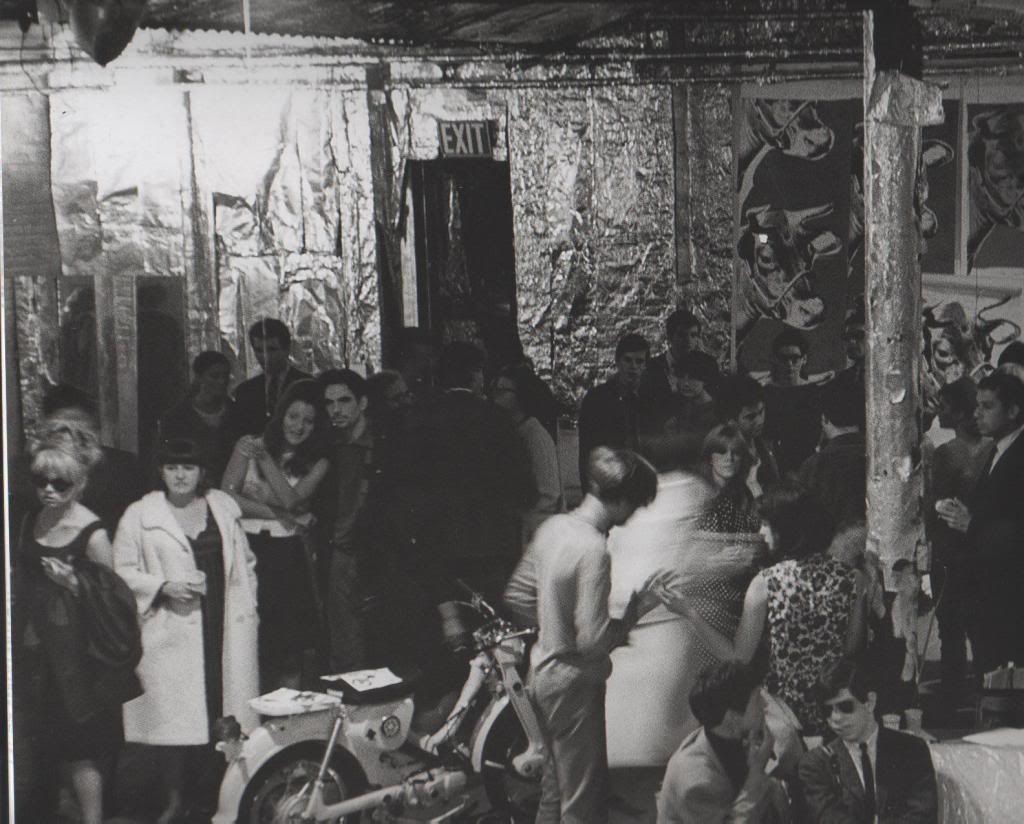 (image from basisdesign.com)
(image from basisdesign.com)
According to one account, the first series of art works Warhol created there were packages for food and other grocery store items.
"The first works created at the Factory
were a series of food boxes. Andy was fascinated by the shelves of foodstuffs
in supermarkets and the repetitive, machine-like effect they created… He wanted
to duplicate the effect but soon discovered that the cardboard surface was not
feasible. I located a carpenter in the East Sixties, and Andy hired him out
to build plywood boxes that we would then paint and screen, to create the illusion
of the real thing… The brand names chosen consisted of two versions of Brillo,
Heinz Tomato Ketchup, Kellogg's Corn Flakes, and Mott's Apple Sauce. We obtained
cardboard-box samples of each of these products wither from a grocery store
or, in the case of the Brillo box, directly from the manufacturer… We were able to get at least
two sides done in a day. A hundred or more were produced in a period of a month.
They were literally three-dimensional photographs of the actual products."
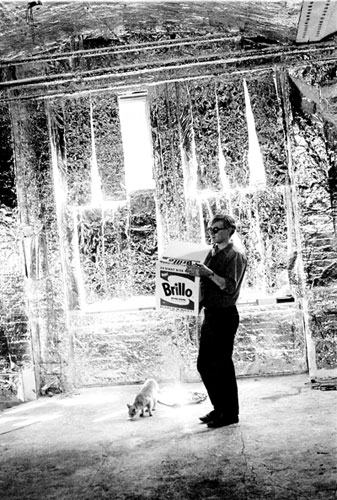
(image from fleisher.org)
The Factory eventually had three different locations between its inception and 1984, and was constantly buzzing with work on movies, photos, and silkscreens. As former Velvet Underground member John Cale said, "It wasn't called the Factory for nothing. It was where the assembly line for the silkscreens happened. While one person was making a silkscreen, somebody else would be filming a screen test. Every day something new."
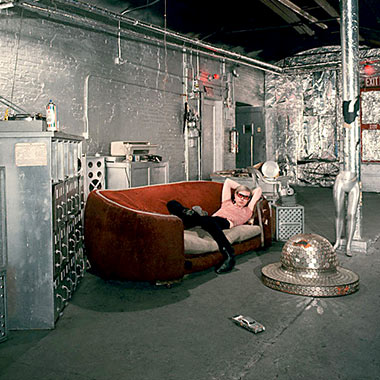
(image from caronparis.tumblr.com)
There is far too much to discuss when it comes to the projects and other things that transpired at the Factory over the years, so I'll just say this – I would love to have been a fly on the wall at any given party there!
Rounding out the collection is the Photobooth gift set (which you can still enter to win!). It includes nail polishes in Back Room (black), Soup Can (tomato red), Chelsea Girls (beige), and Silver Factory (light metallic silver). The box features Warhol's 1963 shots from a Times Square photobooth.
He was commissioned to make a silkscreen painting out of these pictures for Detroit art collector Florence Barron. The original price was $1,600 (roughly $11,000 today). It fetched $38.4 million at a 2011 Christie's auction.

(image from vendingtimes.com)
Christie's describes the photobooth series, providing some insight as to this image was chosen for the NARS Silver Factory collection and how it relates to the other "superstars" included: "Warhol’s decision to make his first self-portrait using a photobooth
was a genius act that reflected both his admiration for Marcel Duchamp
and the latter’s concept of the 'ready-made' work of art, as well as
Warhol’s own oft-stated desire to be a machine. The common dime store 'photomat' clearly conformed with Warhol’s desire to create a new
mechanical and democratic art for a massconsumer and mass-media obsessed
world. The photobooth’s impersonal lens offered a nonprejudicial and
artless image of whatever pose or face the sitter wished to present to
it. Behind its closed curtain, anybody could be a 'superstar' of their
own making. While Warhol’s earlier use of photography had been
restricted to the recycling of previously published media images, his
discovery of the coin-operated photobooth gave him a means to generate
unique images that at the same time had been made by a public machine
that everyone had access to. Warhol was inspired to use the photobooth after being commissioned by Harper’s Bazaar
magazine to provide images for an article in the April 1963 issue…The photobooth was the perfect tool for Warhol’s
vision: he loved the photostrip’s seriality, its resemblance to
filmstrips; he enjoyed the photobooth’s elimination of the photographer,
and along with the silkscreen, its ability to remove Warhol’s art yet
another step from the human touch. Within the private domain of the
booth, one could act out one’s fantasies as though in front of the
bathroom mirror; and he reveled in the sleaze factor – the booths in
Times Square were especially disreputable places." (emphasis mine) For more on his photobooth pictures, check out this book published by Robert Miller Gallery.
So that about wraps it up. I must say, I am now thoroughly exhausted! If you're still reading, thank you! I hope you enjoyed learning about Warhol for this collection as much as I did. And if you're not too tired to answer questions, which is your favorite piece in the Silver Factory collection and who would you want to hang out most with? Besides Andy himself, of course, my vote goes to Candy Darling – she seems like she would have been a lot of fun.


